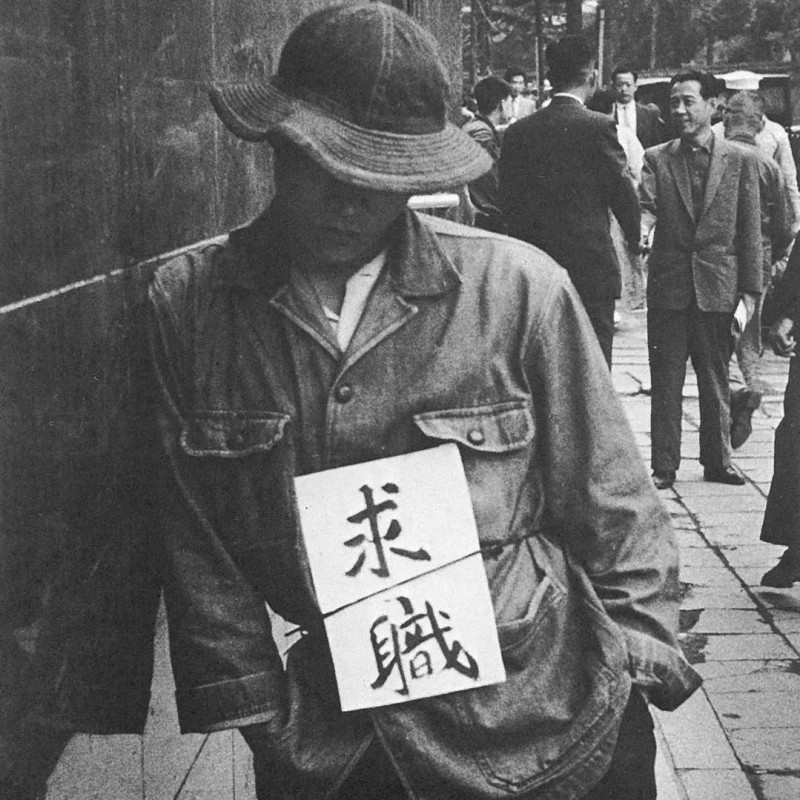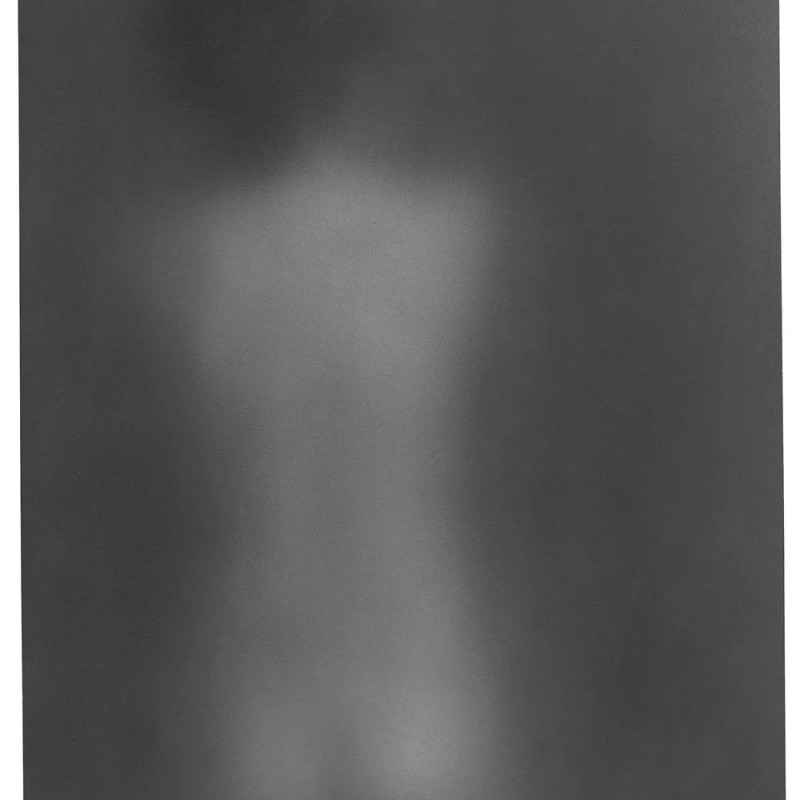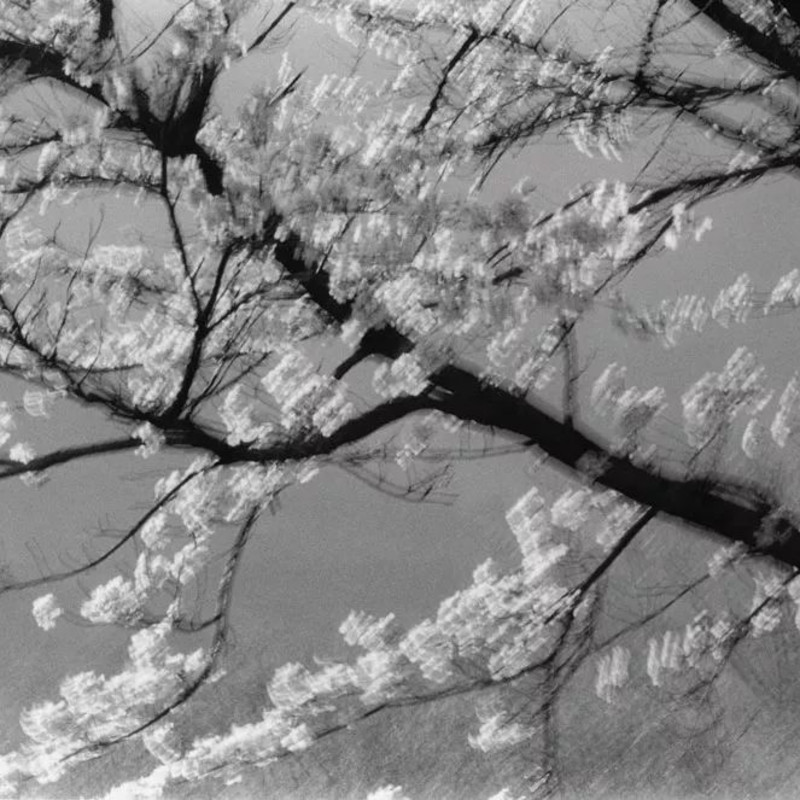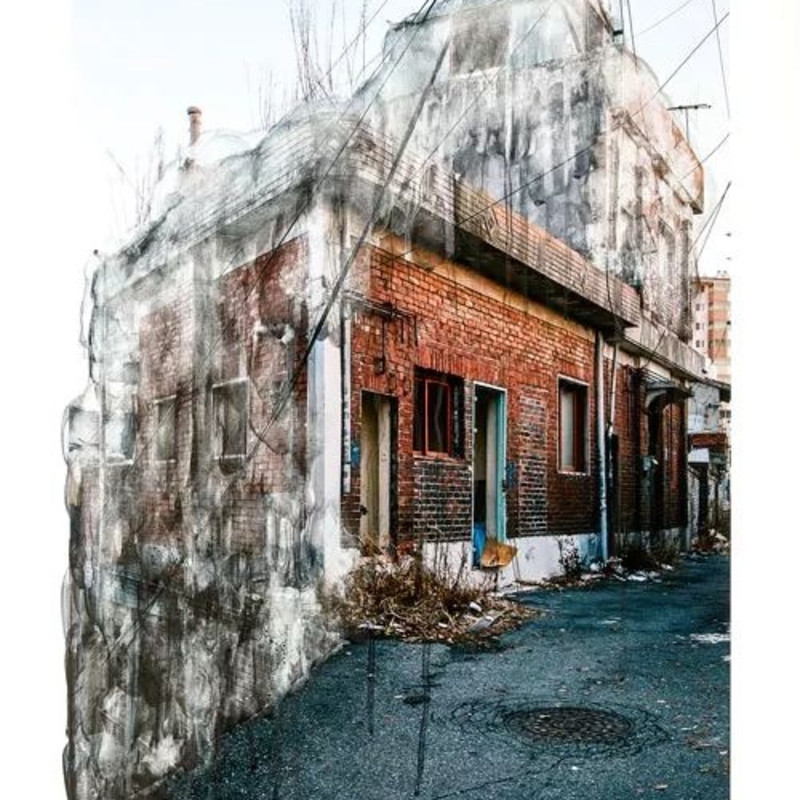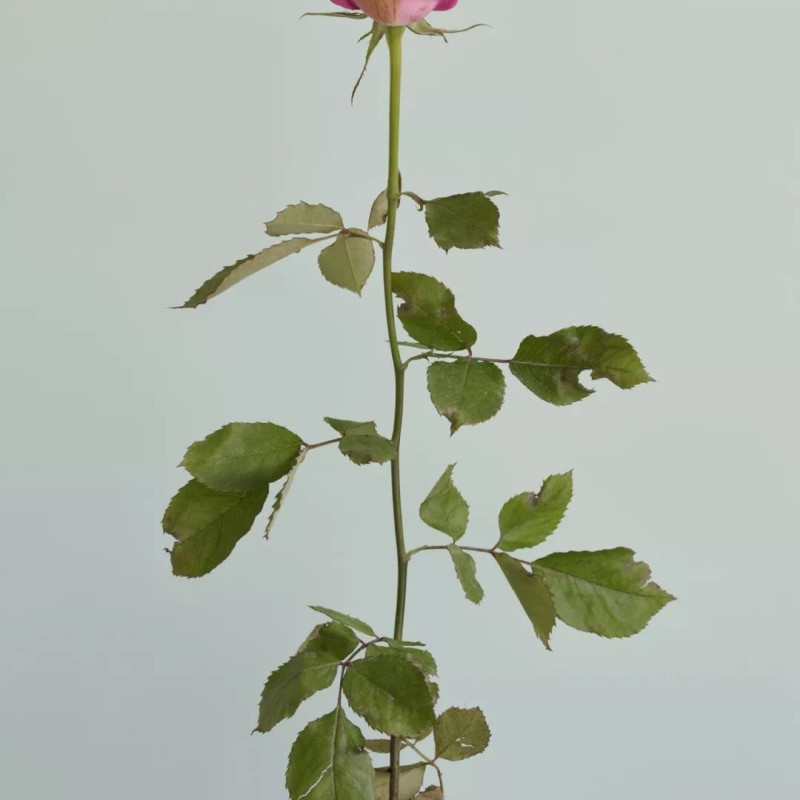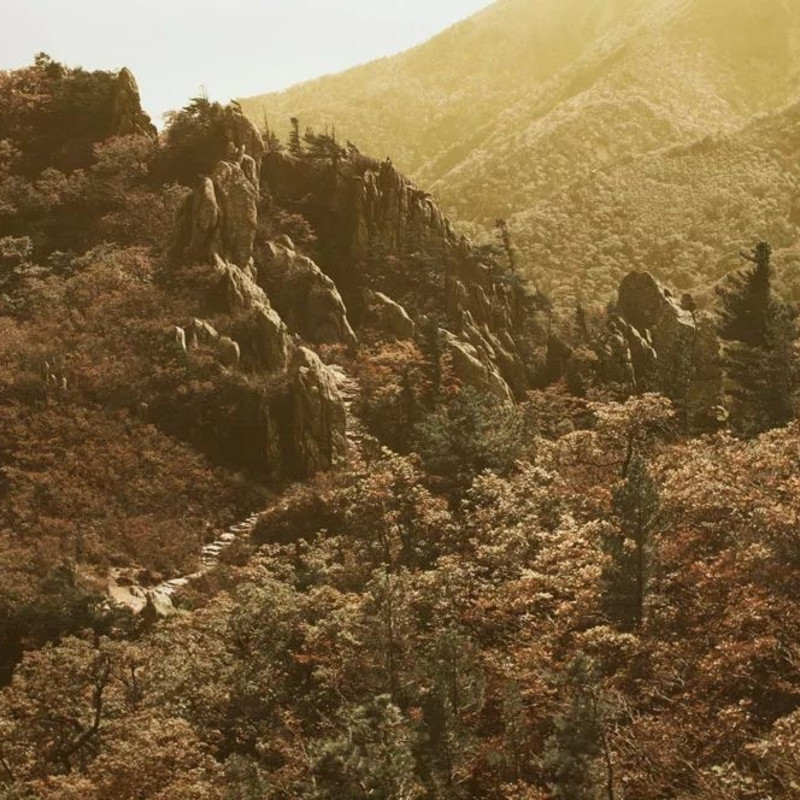Organizer: Three Shadows Photography Art Centre
Talk: January 13, 2019 14:00
Opening: January 13, 2019 16:00
Duration: January 13-March 24 (extended), 2019
Address: 155A Caochangdi, Chaoyang District, Beijing
Three Shadows Photography Art Centre
Support: The Museum of Photography, Seoul, SongEun Art and Cultural Foundation
Three Shadows Photography Art Centre is honored to present the exhibition “Greetings from South Korea,” which consists of three parts: "Limb Eung-Sik: History Through the Lens", "Reinventing Our Time” and "Same Seasons, Different Memories” The three shows work in conjunction to present a multifacted look of Korean photography in three different periods. “History Through the Lens” presents a documentary look at changes in Korean society in the mid-20th century. “Reinventing Our Time” includes photographers who consciously re-explored Korean humanities and aesthetics after World War II, incorporating influences from the West. And “Same Seasons, Different Memories” focuses on contemporary photography in South Korea – How the young generation freely express themselves through photography right now. This will be the first tour of the exhibition after its appearance at the Jimei×Arles International Photo Festival in Xiamen in 2018. It is a collaboration between Three Shadows, The Museum of Photography, Seoul, and the SongEun Art and Cultural Foundation.
Limb Eung-Sik: History Through the Lens
Co-Curated by Seok Jae-Hyun and Kim Sunyoung
Limb Eung-Sik (1912-2001), was not only a well-known and pioneering Korean photographer, but also an administrator, educator and critic, who made great contributions to the establishment of the theory and artistic substance of photography as a thread of Korean art. As a figure of Korean photography and a witness of South Korea’s dramatic changes through the 20th century, Limb’s works have both an aesthetic and historical value. The exhibition, which covers most of Limb’s 50-year long photographic career, introduces Limb Eung-Sik both as artist and with texts on the history of Korean photography, little known by an international audience. It also examines the role of Limb in the history of modern Korean art, instrumental in lifting the status of photography from documentary technique to art. As an advocate of photography, Limb Eung-Sik brought New York MoMA’s legendary exhibition “The Family of Man” to Seoul’s National Museum of Modern and Contemporary Art (MMCA) in 1957, which was credited as the first major photography exhibition in Korea. Limb was the first-ever Korean photographer to hold a show at a national museum, in 1982 at the MMCA.
Before the Korean War (1950-1953), since the Imperial Japanese rule (1910-1945), Korean photographic works were mainly painting-like artistic photography or examples of pictorialism. Having been a war photographer during the Korean War, Limb Eung-Sik, who was born in Busan but grew up in Japan, became interested in realistic photographic techniques, later advocating a genre of photography called ‘life-centered photography’ - a form of humanistic realism, expressing the realities of society and everyday lives - which became very popular after the war. Limb argued that ‘the artistry of photography depends on its honest representation of reality, and thus only good documentary photographs deserve to be considered as examples of true photography’. (quote from the catalogue of the exhibition Photography of Limb Eung-Sik at National Museum of Modern and Contemporary Art, Korea in 2011).
This exhibition features a selection of 20 photos by Limb Eung-Sik from the collection of The Museum of Photography, Seoul, starting in the 1930s, when, influenced by pictorialism, he experimented with style using his first camera, a middle school entrance gift, to his war photography of the early 1950s and his post-war photography that attempted to provide objective representations of social phenomena and the momentariness of everyday existence. His portraits of Koreans of the times, exhausted by social circumstances but striving to earn a crust, is well evidenced in one of Limb's most iconic images, Job Hunting (1953), while the survivors from the heavy shelling of the war are represented by a single bare tree in his Naked Trees (1953).
About the Artist
Limb Eung-Sik
Born 1912, Japan. Died 2001, South Korea.
Limb Eung-Sik is now regarded as one of the most important figures in the history of photography in South Korea. Having started as an amateur photographer, he first focused on pictorialism as part of the Busan Photography Association and Kangreung Photography Association during the Japanese colonial period (1910-1945). Following the Korean War (1950-1953) as a war photographer, Limb Eung-Sik became interested in the realistic photographic recording of facts, and later advocated a genre of photography called ‘life-centered photography’ - a form of humanistic realism, expressing the realities of society and everyday lives - which became very popular after the war. As an advocate of photography, Limb Eung-sik brought New York MoMA’s legendary exhibition “The Family of Man” to Seoul’s National Museum of Modern and Contemporary Art (MMCA) in 1957, which is credited as having been the first major photography exhibition in Korea. Limb was the first-ever Korean photographer to hold a show at a national museum, in 1982 at the MMCA.
Reinventing Our Time
Co-Curated by Seok Jae-Hyun and Kim Sunyoung
Between 1910 to 1945, Japan annexed Korea and attempted to eradicate Korean culture and identity, for example, by banning Korean literature and language from schools. Only six years after World War II, the country was devastated by the Korean War. This exhibition shows the work of five of the most prominent photographers of the post war generation, who began work while a succession of military regimes ruled the largely agrarian country. They were the first generation of Korean artists who studied abroad and brought new ideas back to their country. Nevertheless, many of them remained attached to Korean landscapes and traditions while embracing new aesthetic ideas. Many photographers from this generation depicted the extraordinarily beautiful nature and landscapes of Korea, a country surrounded by the ocean and mostly covered by mountains and forests, and its religious and spiritual practices that are primarily tied to nature. “Reinventing Our Time” investigates what it means to be Korean after this disruptive history, from the viewpoint of five photographers born in post-war Korea: Kim Jungman, Koo Bohnchang, Lee Gap-Chul, Min Byung-Hun and Park Ki Ho.
About the Artists
Kim Jungman
Born 1954, Cheolwon, South Korea. Lives and works in Seoul.
As a teenager, Kim Jungman left Korea for Burkina Faso, Africa. Leaving his homeland marked the beginning of a long philosophical journey that eventually took him to Europe to study painting. He discovered his passion for photography while attending École Nationale Supérieure d’Art à la Villa Arson in Nice, France in 1974-77. In 1979, Kim won the prestigious Best Young Photographer Award at Rencontres d’Arles. The same year, he was named one of Today’s 80 Photographers in France, the youngest on the list. He moved back to Korea and found his way into commercial and fashion photography in the 1980s and 1990s. Recently, he has battled to overcome a limitation imposed on photographers in Korea to be either artistic or commercial, but not both. In leaving his flourishing career as a commercial photographer in 2006, he stopped photographing Korea’s most famous celebrities, instead turning his lens to the countryside of his native land.
www.kpcreativeagency.com/management/kim-jungman/
Koo Bohnchang
Born 1953, Seoul, South Korea. Lives and works in Seoul.
Koo’s work has always dealt with the passage of time. He captures still and fragile moments, attempting to reveal the unseen breath of life. Since completing his studies in Germany in 1985, Koo Bohnchang has established an international reputation as a photographic artist. His works have been featured in over 30 solo exhibitions including Samsung Rodin Gallery, Seoul (2001), Peabody Essex Museum, Massachussetts (2002), Camera Obscura, Paris (2004), Kukje Gallery, Seoul, Kahitsukan Kyoto Museum of Contemporary Art, Japan (2006), Goeun Museum of Photography, Busan (2007), and Philadelphia Museum of Art, Philadelphia (2010).
Lee Gap-Chul
Born 1959, Jinju, South Korea. Lives and works in Seoul, South Korea.
Lee Gap-Chul has travelled to various corners of Korea and photographed images that portray the joy and sorrow of his ancestors, their cheerful nature and persistent vitality. A graduate of Fine Art & Photography from the University of Shingu, he has participated in many solo and group exhibitions at prestigious venues in Korea such as the Lux Gallery in Seoul, the Daegu Photo Biennale (2006, 2014), the Kumho Art Museum, The Museum of Photography, Seoul (2002), the GoEun Museum of Photography (2012) and National Museum of Modern and Contemporary Art , Gwacheon (MMCA), Contemporary Art Museum (2008). He was invited to participate in international fairs and festivals such as FOTOFEST 2000 in Houston, US, and Photographie Contemporaine Coréenne in Montpellier, France, in 2002, and Paris Photo in 2005.
Min Byung-Hun
Born 1955, Seoul, South Korea. Lives and works in Gunsan, South Korea.
Min Byung-Hun was a student in electronic engineering before shifting to photography in the early 1980s and studying at the Soon-tai Hong studio in Korea. In 1984 he was awarded the silver medal of Dong-A Salon with his work 25th hour. For over 30 years, Min Byung-Hun has represented nature and human bodies through black and white gelatin silver prints. From the moment he laid his eyes on the object through the viewfinder until the images are printed onto traditional paper and dried, Min makes sure no one interferes with the creative process. What is important for Min is not just the traditional photographic process or the virtue of handicraft but his autonomy to lead the entire operation. Min’s stubborn perfectionism and delicate sensitivity are best expressed in series such as Not Much of a Landscape, Weed, Sky, Deep Fog, Tree, Snow Land, Waterfall, and Nude, which have established a world distinctive to the artist.
Min's work has been widely exhibited and collected by institutions including the Los Angeles County Museum of Art (LACMA); Brookings Institution, Washington, DC; Centre National des Arts Plastiques, Paris; Seoul Art Center; Maison Européenne de la Photographie, Paris; and National Museum of Modern and Contemporary Art , Gwacheon, Korea.
Park Ki Ho
Born 1960, Seoul, South Korea. Lives and works in Seoul, South Korea.
Park Ki Ho moved to U.S. as a child and studied photography at the Rhode Island School of Design (RISD) in 1986. After returning to Korea in 1987, Park worked for various international magazines including Time, Business Week, Fortune and Forbes. In 2007, he had his first solo exhibition called Photography & Texture which was a combination of large photographic prints with three dimensional objects. Then, he went back to RISD to earn his Master’s degree. After coming back to Seoul, with his newly attained sensibility of empty storefronts, he began documenting deserted old towns that were about to be demolished to build new townhouse projects while teaching at Yonsei University Songdo International Campus and Graduate School.
About Curators
Kim Sunyoung
Born 1982, Seoul, South Korea. Lives and works in Seoul.
Since 2010 Kim Sunyoung has been working for The Museum of Photography, Seoul as Curator in charge of exhibitions and international relations. Kim graduated with a Bachelor of Creative Arts at The University of Melbourne, Australia and a Master of Art Theory at Korea National University of Arts. She joined many international projects such as Focus Photography & Moving Images organized by the French Institute in Paris and also published Performance, Politics of Body: Criticism and Meta Criticism.
About The Museum of Photography, Seoul, and Ga-hyeon Foundation of Culture
The Museum of Photography, Seoul is the first photographic museum in South Korea and was founded by Ga-hyeon Foundation of Culture. Ga-hyeon Foundation of Culture is an organization established in 2004 by the Hanmi Pharmaceutical Company. The mission of Ga-hyeon Foundation of Culture is to promote and popularize culture and arts. The museum realizes its mission through exhibitions, support of artist, educational programs, publications, as well as building a network of other organizations which engage in the development of photography. In particular, it endeavors to catalogue the history of Korean photography by collection and researching early and contemporary photographs. In addition, the collection comprises artistically and historically valuable works of international and Korean photographers. And present them in exhibitions and publications. The publication has illuminated the highlights of Korean photography ranging from the modern photographs of Korea to contemporary artists works.
Seok Jae-Hyun
Born 1970, Daegu, South Korea. Lives in Daegu and works globally.
Seok Jae-Hyun, a graduate of Ohio University majoring in Visual Communication, is a curator, educator and photographer whose work has been published by The New York Times, International Herald Tribune and Korean GEO.
Seok has co-organized the Daegu Photo Biennale (South Korea) in 2006, and has curated many international exhibitions including Imaging Asia in Documents (2006) and Women in War (2014) for Daegu Photo Biennale, Imaging Korea (Budapest, Berlin, Warsaw, Brussels, Madrid, Astana and Rome, 2016-2017), ON KOREA (Istanbul and Ankara, Turkey, 2013). He has been involved in Dali International Photo Biennale (DIPE, China, 2011, 2013, 2015 and 2017) and Foto Istanbul (since 2015) as a foreign curator. Seok received the Best Curator Award twice from DIPE in China, in 2015 and 2017. He has participated as a portfolio reviewer in FotoFest in Houston, Kyotography, Festival de la Luz in Buenos Aires, to name a few. After profiling thirty established photographers from other countries in VON photography magazine, he currently works as an associate editor for Photo Dot magazine in Korea.
Same Seasons, Different Memories
Curator: Park Haeni
Most of us experience a variety of seasons in our lifetime. Though they may come and go in cycles every year, each season has its distinct color, temperature, and fragrance, as well as moments perceived differently depending on individual experience that are consequently remembered independently. We fill these seasons with our daily routine and livelihood without any special occasion; only to later realize that countless memories were being created and connected by the environment around us. In this exhibition, under the title Same Seasons, Different Memories, Korean artists Beak Jungki, Chung Heeseung, Ha Tae-Bum, Kim Seunggu and Yoo Youngjin, present Spring, Summer, Fall, and Winter, through their own perspective and language. Their works embody and capture a moment or memory of the artist's expression of the cycle of time, seasons, and human nature, both literally and figuratively, giving us the chance to stop and reflect on the changing times.
ABOUT THE ARTISTS
Beak Jungki
Born 1981, Seoul, Korea. Lives and works in Seoul.
Beak Jungki was trained in Korea and in the UK, receiving his M.F.A. from Glasgow School of Art, UK, PG Diploma (Fine Art) from Chelsea College of Art, London, UK and B.F.A. in Sculpture from Kookmin University, Seoul. Driven by an interest in religion, Eastern philosophy, and science, Beak’s work explores the power of basic yet extraordinary physical processes. He has held numerous exhibitions in Korea and abroad, including at such Korean institutions as MMCA, Seoul Museum of Art, Leeum, Amore Pacific Museum and SongEun ArtSpace. A recipient of the SongEun Excellence Art Award in 2012, Beak has also been invited to Delfina Residency in London and Doosan Residency in NYC.
https://jungkibeak.blogspot.com/
Chung Heeseung
Born 1974, Seoul, Korea. Lives and works in Seoul.
Chung Heeseung graduated with a B.A. in Painting from Hong-Ik University, Korea (1996) and B.A./M.F.A.(2007) in Photography from London College of Communication. Her frank portrayal of everyday objects raises questions about the limitations and nature of photography, the core medium of representation. She has held numerous exhibitions in New York, London and Seoul, and has also received many awards, including the Unveil’d Photobook Award (2016), the 11th Daum Prize, Korea (2012), the 11th SongEun ArtAward - Excellence Prize, (2012), Photo España 2008 Descubrimientos PHE, Spain (2008), Critical Mass Top 50, Photolucida, USA (2008), Nikon Discovery awards, UK (2007).
Ha Tae-Bum
Born 1974, Seoul, Korea. Lives and works in Seoul.
Ha Tae-Bum works with video and three-dimensional installations based on photographic images. He was originally trained as a sculptor, receiving his M.F.A. from Stuttgart State Academy of Art & Design, Germany, in 2009, and his B.F.A/M.F.A. from Chung-Ang University, Korea, in 2001. He is mainly interested in truth and the mass media’s distribution of information about current incidents and accidents occurring in our society. He recomposes in his works catastrophic incidents, natural disasters, wars and accidents. He also collects photographs of terrorist attacks and crime scenes exposed in the media to re-fabricate these scenes into decolorized, white objects. Then he photographs them in an exactly identical composition as the reported news images. Ha Tae-Bum is the recipient of the 2013 SongEun Art Award - Excellence Prize (SongEun Art and Cultural Foundation, Seoul), as well as two other art prizes: one from the SeMa Young Artist Support Program, Seoul (2010), and the 23rd Joong-Ang Fine Arts Competition - Excellence Prize, Ho-Am Art Hall, Seoul (2001). He was a finalist for the Korea Artist Prize in 2015.
Kim Seunggu
Born 1979, Seoul, Korea. Lives and works in Seoul.
Kim Seunggu received his M.F.A in Fine Arts, from the School of Visual Arts in Korea National University of Arts, Seoul, in 2012. His works can be found in many public Korean collections including the National Museum of Modern and Contemporary Art (Seoul), Gyeonggi Museum of Modern Art (Ansan), GoEun Photo Museum (Busan) and Dong-gang Photo Museum (Yeongwol). He was a finalist for the Lens Culture Art Photography Awards 2018. In 2019, Kim Seunggu will have a solo exhibition at Filter Space in Chicago, USA.
Yoo Youngjin
Born 1988, Seoul, Korea. Lives and works in Seoul.
Yoo Youngjin graduated with a B.F.A. in Photography from Chung-Ang University, Seoul, in 2013. The same year, he participated in an artist residency at Laznia Center for Contemporary Art, Gdansk, Poland. Yoo Youngjin has participated in several group exhibitions and festivals, such as New Generation - Sizak at The Museum of Photography, Seoul (2014), Lianzhou Foto, China (2013), 5th European Month of Photography in Berlin, Germany (2012) and Breda Photo Festival, Museum of the Image, Breda, The Netherlands (2012).
https://cargocollective.com/photokomori
ABOUT CURATORS
Park Haeni
Born 1988, Seoul, Korea. Lives and works in Seoul.
Since 2013, Haeni Park has been working for art consultancy Laurence Geoffrey's, Ltd as Project Manager, overseeing the activities and program at non-profit, non-commercial venues SongEun ArtSpace and SongEun ArtCube, assisting in actively selecting and curating young Korean artists. She was responsible for exhibitions FRAC: What is not visible is not invisible (2017), solo exhibition of Kim Yoon-Chul Evanescent (2016) and Summer Love: SongEun ArtCube Collective Exhibition (2015 and 2018) at SongEun ArtSpace.
ABOUT The Museum of Photography, Seoul
The Museum of Photography, Seoul, is the first museum of photography in Korea, and was founded by the Hanmi Foundation in 2002. The museum engages in a variety of activities to promote an understanding and appreciation of photography. It exists to encourage and inspire photographers who choose to pursue an artistic career in the realm of Korean photography.
The museum’s mission is to discover artists with talent and provide them with opportunities to realize their full potential and to support Korean photographers and their works so that they receive worldwide recognition.
The Museum of Photography, Seoul has an invaluable collection of early Korean photography from 1880 to the 1940s, and consistently collects and researches modern and contemporary Korean photography. Their collection also includes works from international masters of photography such as Eugène Atget, Joseph Koudelka or Robert Capa, as well as contemporary artists from Eastern Europe.
About SongEun Art and Cultural Foundation
As a non-profit, non-commercial cultural foundation based in Seoul, SongEun Art and Cultural Foundation actively supports Korean contemporary artists though the SongEun ArtSpace (since 2010), SongEun ArtCube (since 2002) and SongEun ArtAward (since 2001). SongEun Art and Cultural Foundation was established by the late Mr. Yoo Sung Yeon in 1989, who as a young man having fled to South Korea from the North, was filled with creative ambitions but turned his attention toward business and the energy field. The name of the foundation is derived from Chairman Yoo’s nom de plume, Song Eun, which translates as ‘hidden pine tree’ and appropriately captures his spirit and wish to be a hidden, yet solid foundation for aspiring artists.
